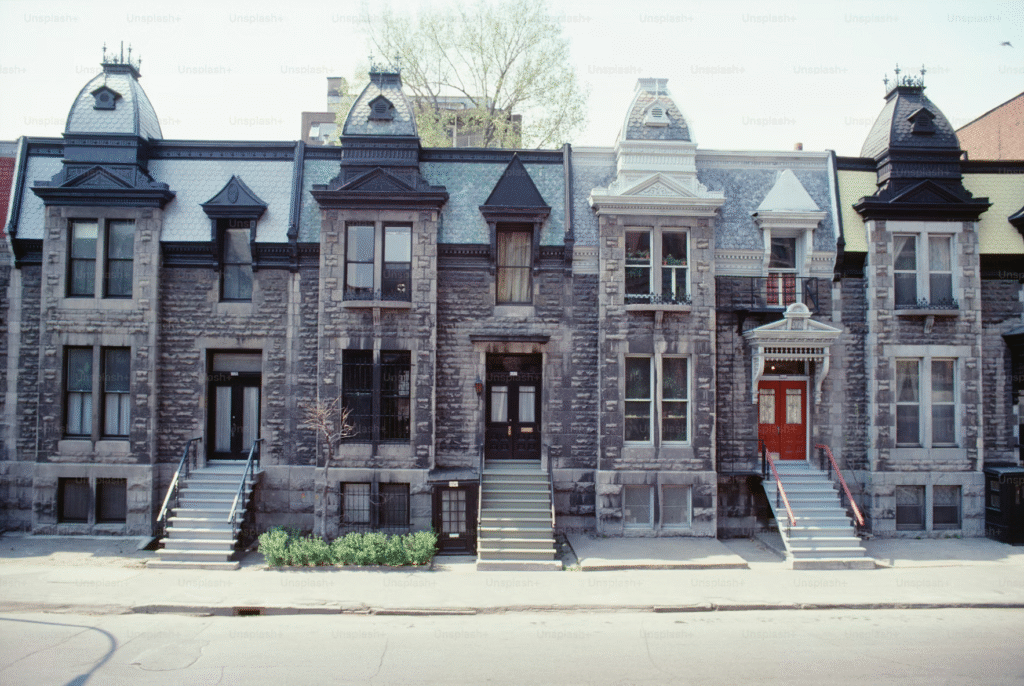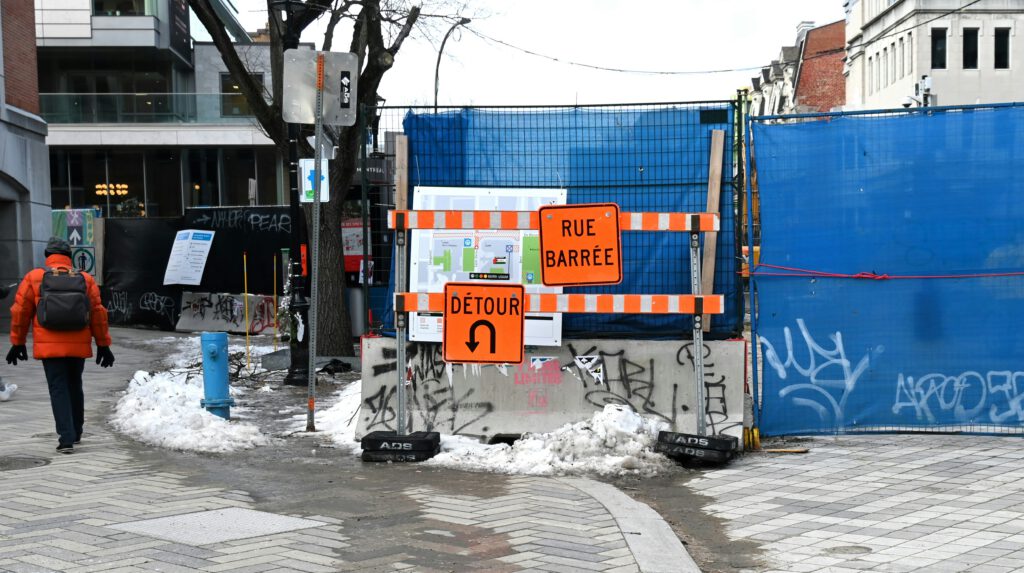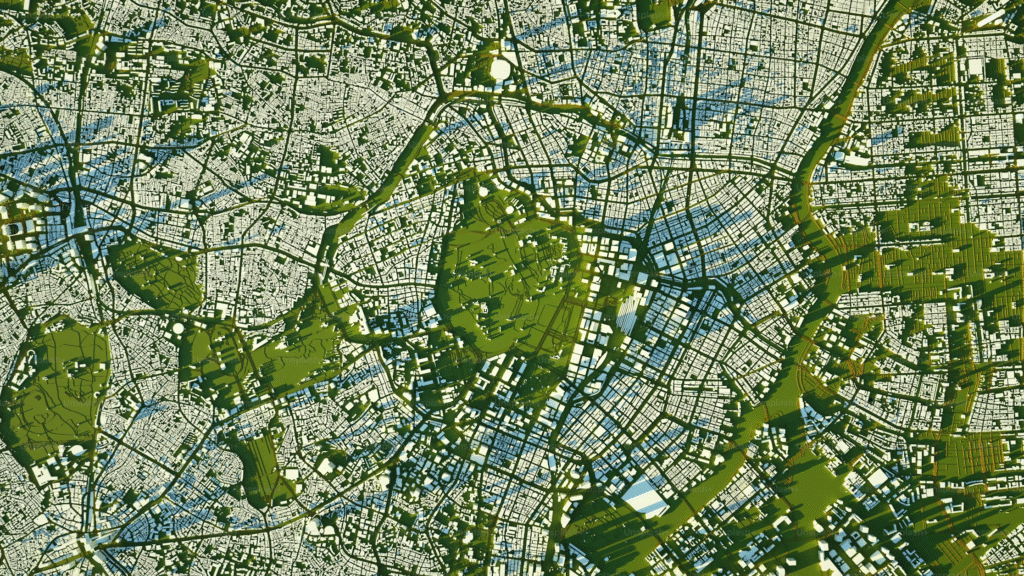What is the “welcome tax”?
In Quebec, the “welcome tax” is the nickname people use for the Land Transfer Tax (taxe de mutation immobilière in French).
The Land Transfer Tax is a municipal tax that you pay when you buy a property. The municipalities in Quebec then use this money to fund local infrastructure and services such as road repairs, public transit, parks, libraries, and emergency services.
For instance, if you go to Urban Projects Montreal, and scroll approximately half way down the page. You can then click on the municipality in which you live and review the work that is currently being done in your community.

The amount of tax that you have to pay is calculated as a percentage of the property’s purchase price (or municipal value, whichever is higher). You pay it only once, at the time of transfer or ownership. But it is paid on every house purchase that you make i.e. not just for first time buyers.
Why it’s called “welcome tax”
The name is ironic. When the tax was introduced in the 1970s, it was promoted by then-Minister Jean Bienvenue and “Bienvenue” literally means “welcome” in French. People started calling it the “taxe de bienvenue” (Bienvenue Tax / Welcome Tax), and the nickname stuck.
How to calculate welcome tax?
In Quebec, welcome tax is calculated progressive, meaning that the more expensive the property, the higher the marginal rate. With the exception of Urban Agglomerations, each municipality is allowed to set their own marginal tax rates however, these rates must sit within the tax brackets set out within Quebec’s provincial framework.
The rates set for the Urban Agglomeration of Montreal are shown below. These rates are published on the Official Website of Ville de Montreal.
- 0.5% on the first $55,200
- 1.0% on $55,200 – $276,200
- 1.5% on $276,200 – $552,300
- 2.0% on $552,300 – $1,104,700
- 2.5% on $1,104,700 – $2,136,500
- 3.5% on anything above $2,136,500
So, for a $500,000 home in Montreal, the welcome tax would be roughly $6,000.
Why do you have to pay your welcome tax?
In the late 1970s, Quebec municipalities were struggling financially. They needed a new, stable source of revenue beyond annual property taxes. As such, the provincial government of Quebec passed legislation allowing municipalities to collect a tax on property transfers. The goal was to ensure that every time a property changed hands (often at a higher value), the municipality could capture some of that increased wealth to help fund local services.
Why is welcome tax controversial?
The welcome tax is controversial because property owners already pay municipal taxes. Therefore if you want to buy a house, you have to pay the municipal taxes and the welcome tax. This is why many Montrealers joke that it is the cost of being “welcomed” into the new community.
Who sets the welcome tax rate?
Quebec is organized into five types of municipalities. These are shown in the diagram below.

With the exception of urban agglomerations, the welcome tax (taxe de mutation immobilière) is set and collected by independent municipalities.
In an urban agglomeration, such as the Agglomération de Montréal, the tax is calculated, collected and administered by the central city (in this case, Ville de Montréal). This is the case even though the agglomeration includes several smaller municipalities on the island.
So, for example, if you’re buying a property in Dollard-des-Ormeaux, the welcome tax rate is set and collected by the City of Montréal, since Dollard-des-Ormeaux is part of the Agglomération de Montréal.
Which areas have the highest welcome tax rates in Montreal? (2025)
Montreal, Laval, Longueuil, and a few others have adopted higher luxury brackets (like the 3.5% rate on properties over $2 million).
Smaller towns often stop at the 2% or 2.5% level.
The table below compares the different tax rates in each Montreal municipality.
| Municipality / Region | Marginal Rate Brackets | Source |
|---|---|---|
| Ville de Montréal | 0.5 % (first ~ $61,500) 1.0 % (next up to ~ $307,800) 1.5 % (next up to ~ $552,300) 2.0 % (next) 2.5 % 3.5 % 4.0 % (top) | Official Website Ville de Montreal |
| Longueuil | 0.5 % on first $61,500 1.0 % on portion up to $307,800 higher rates beyond | Official Website City of Longueuil |
| Brossard | 0.5 % up to $61,500 1.0 % up to $307,800 1.5 % up to $500,000 3.0 % above | Official Website City of Brossard |
| Laval | 0.5 % on first $61,500 1.0 % up to ~ $307,800 1.5 % for mid-ranges 2.0 % 3.0 % on highest brackets | Official Website City of Laval |
| Quebec City | 0.5 % up to $61,500 1.0 % next bracket 1.5 % 2.0 % 2.5 % 3.0 % high end | Official Website Ville de Quebec |
| Gatineau | 0.5 % on first bracket 1.0 % next 1.5 % next 2.0 % / 3.0 % for high values | Official Website of Gatineau |
Conclusion: Welcome tax
Understanding how the welcome tax works helps you avoid surprises and plan your finances properly.
While it might feel like just another fee, it’s actually one of the largest one-time costs you’ll face when buying a property in Quebec. Use our calculator anytime you’re comparing homes or planning your budget, even a small difference in city or property price can change your total by thousands.
If you’re not sure how this fits into your full closing costs, read our Closing Cost Calculator for Buyers (2025) to see the complete picture of what you’ll pay from start to finish.
And finally… depending on your situation, you may be eligible to recover some your welcome tax through provincial or municipal programs designed to help new homeowners. Speak with an expert to find out how.
Need an expert?
The rules around these government incentives can be confusing, and many buyers miss out simply because they don’t know they exist.
Our team can connect you with a verified local real-estate broker who understands which rebates and programs apply in your city — and how to make sure you don’t leave money on the table.
Speak with an agent today — it’s free, and they’ll help you find out if you qualify for welcome tax refunds or other homebuyer incentives.




